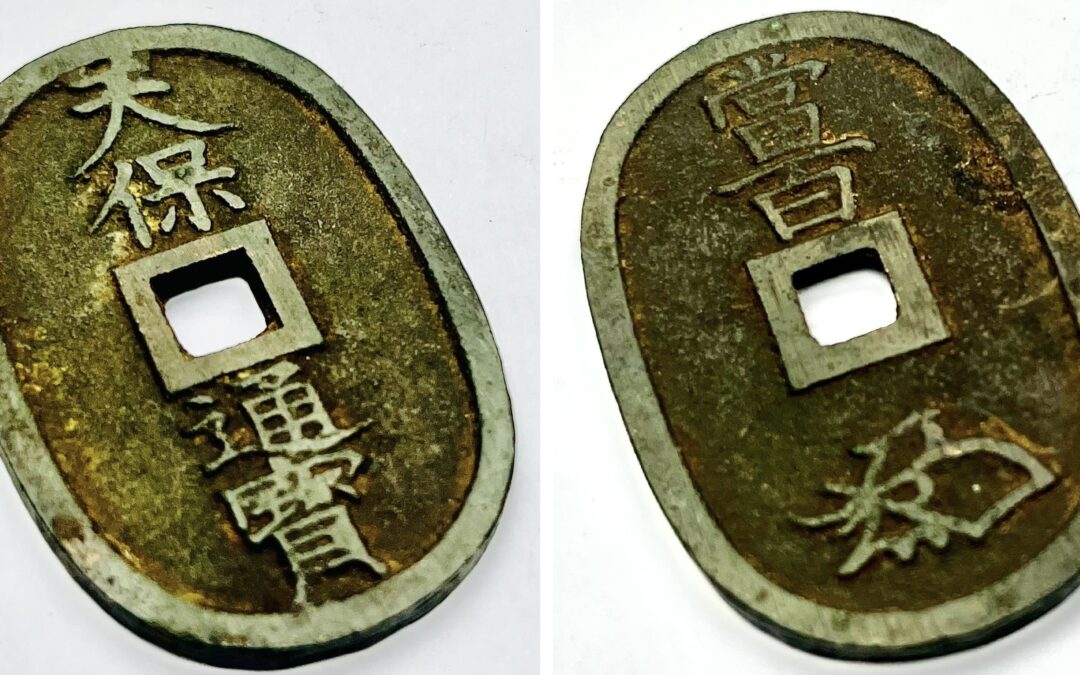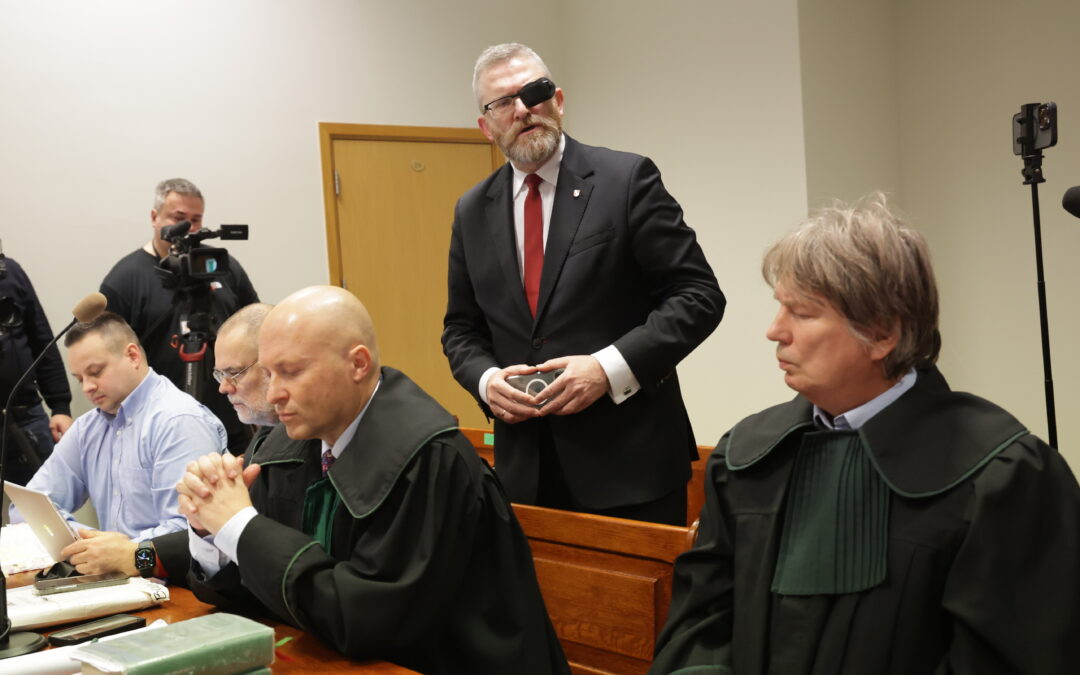Keep our news free from ads and paywalls by making a donation to support our work!

Notes from Poland is run by a small editorial team and is published by an independent, non-profit foundation that is funded through donations from our readers. We cannot do what we do without your support.
A small regional Polish museum has found its collection enriched with an unusual item after a local resident discovered a 19th-century Japanese coin buried in a field.
The find was announced on Sunday by the Museum of the History of the Kamień Region in Kamień Pomorski, a town of 8,500 people in northwest Poland. It was located by Albert Murzynowski, a resident of a nearby village, who was immediately surprised by its unusual shape and size.
The item turned out to be a 100-mon coin of the type produced in Japan in the period 1835-1870. Made of a mix of copper, lead and tin, they had a distinctive oblong shape with a square hole in the centre. The mon was the currency of Japan from 1336 to 1870.
“The discovery of the coin in such an unusual location is extraordinary evidence of global connections even at a time when the world seemed less connected than it is today,” wrote the museum.
The museum notes that such coins were widely used in trade, both domestically in Japan and internationally. However, they add that Japan was relatively closed to the outside world for much of the 19th century.
They speculate that the coin could have ended up in Kamień Pomorski as part of a collection brought by a European merchant, traveller or sailor. The town sits on Poland’s northern Baltic coast in an area that has long been an important trade route.
It could also have been part of a later collection or a souvenir that got lost during the turmoil of the 20th century, added the museum.
The coin will now undergo further conservation work before being put on permanent display.
“Albert Murzynowski’s discovery is a reminder that even a seemingly ordinary piece of land near Kamień Pomorski can hide traces of a fascinating past that connects different corners of the world,” wrote the museum.

Notes from Poland is run by a small editorial team and published by an independent, non-profit foundation that is funded through donations from our readers. We cannot do what we do without your support.
Main image credit: Muzeum Historii Ziemi Kamieńskiej/Facebook

Daniel Tilles is editor-in-chief of Notes from Poland. He has written on Polish affairs for a wide range of publications, including Foreign Policy, POLITICO Europe, EUobserver and Dziennik Gazeta Prawna.



















